Are you planning a trip to Cambodia, but you’re struggling with putting together your itinerary? You’re not sure where to go, how long to stay in each place, and how to get from one destination to another. In this jam-packed Cambodia itinerary guide, I’ll share with you how you can spend both 2 and 3 weeks in the country.
The guide includes the most important historical sights, the coolest ancient temples, the most gorgeous white-sandy beaches, to the most laid-back French colonial towns. You’ll also learn all the practical information necessary to make your trip unforgettable including where to stay, eat, and go as well as how to get from place to place. You’ll learn tips on safety, WiFi, money, and solo travel as well. All prices listed are from 2020.
So grab a cup of tea (or coffee or wine) and let’s travel to Cambodia.
Disclosure: This post may contain affiliate links. As an Amazon Associate and a Bookshop.org Associate, I earn from qualifying purchases. Please see this website’s Disclosure for more info.
TABLE OF CONTENTS
- Why Visit Cambodia
- How to Get Around Cambodia
- Itinerary Stop 1: Phnom Penh
- Itinerary Stop 2: Siem Reap
- Itinerary Stop 3: Koh Rong Samloem
- Itinerary Stop 4: Kampot
- Itinerary Stop 5: Phnom Penh
- Other Places to Visit
- When to Visit Cambodia
- Visas for Cambodia
- Typical Budget for Cambodia
- Cambodia for Solo Travelers
- Currency & ATMs
- WiFi in Cambodia
PRO TIP: No one likes to think about insurance, but accidents do happen. I highly recommend getting travel insurance. During my travels over the past 2 years, I’ve been using SafetyWing for my insurance. They’re very affordable for all ages, and digital nomads can use their insurance long-term.
Why visit Cambodia
I completely fell in love with Cambodia during my 3 weeks of traveling around the country. History. Archaeological ruins. Unforgettable museums. Friendly people. Good Food. Beautiful tropical scenery. Old colonial buildings. Traditional Khmer dance and drama performances. Undeveloped tropical islands with crystal clear water and white sandy beaches. The historic Mekong River. The list goes on and on.
Amazing Archaeological Ruins: Cambodia has had both a glorious and tragic past. The Angkor Kingdom (802-1431) was one of the greatest empires in Southeast Asia covering parts of present-day Thailand, Laos, and Vietnam. During this time, the Khmers built some of the most magnificent religious structures in the world near the city of Siem Reap. Today they are archaeological wonders that would make any Indian Jones’ wannabe salivate at the mere thought of exploring them.
Genocide Museums: In the twentieth century, Cambodia experienced one of the greatest tragedies in the world perhaps on par with the holocaust in Europe. Twenty percent of its population died from starvation, torture, execution, and disease due to the cruel and incompetent policies of the Khmer Rouge government.
You can learn about this tragic past by visiting the Tuol Sleng Genocide Museum and the Killing Fields of Choeung Ek in Phnom Penh. These two museums are heartbreaking as heck, but they’re necessary for everyone to see what happens when a country is run by a brutal inept leader. I also recommend reading up on the history of the Cambodian genocide. You can find a list of books on the genocide here.
Water: One of Cambodia’s most important resources is its rivers, lakes, and seacoast. They make for interesting stops on any itinerary. First, there’s the Tonle Sap lake with its floating villages, the historic Mekong River, the tropical islands of Koh Rong and Koh Rong Samloem, and the waterways in Kampot.
How to get around Cambodia
By Bus
The easiest and cheapest way to get around Cambodia is by bus. You can get just about anywhere (except for islands, of course) by bus. The easiest way to buy bus tickets is to ask your hotel, hostel, or guesthouse to buy them for you one or a few days before departure. Often the bus company will send a van or a tuk-tuk to pick you up at your hotel and take you to the bus’s departure point.
- Phnom Penh – Siem Reap: Buses take about 6.5 hours and cost around US$12 – $13. Check out schedules and prices on 12go.asia.
- Siem Reap – Sihanoukville: Buses take around 11 hours and cost US$22.
By Mini-van
Another option is to travel in a minivan. They tend to be quicker, and a bit cheaper, but I found them to be more cramped and uncomfortable than buses. You can buy your tickets through your hotel, hostel, or guesthouse just like you do with buses.
By Train
Cambodia has two train routes. I never took the train as it wasn’t running when I was in Cambodia, so I can’t say whether it’s comfortable or not.
- Phnom Penh – Kampot – Sihanoukville (runs on the weekends, Fridays, and Mondays)
- Phnom Penh – Battambang – Poipet (Poipet is on the border of Thailand; runs only on the weekends)
By Boat
You can travel by boat between Phnom Penh and Siem Reap, and between Sihanoukville and the islands of Koh Rong and Kohn Rong Samloem. I’ve included info on where to buy tickets for each destination.
By Shared or Private Taxi
You can also do a share or private taxi. Shared taxis are just cars that are shared by strangers and that ply a specific route. I never took a shared or private taxi between cities in Cambodia, so I can’t tell you whether it’s comfortable or not.
Private taxis are going to be more expensive.
Your hotel or hostel can arrange a shared or private taxi for you.
By Air
You can travel by air between Phnom Penh, Siem Reap, and Sihanoukville.
Itinerary Stop #1: Phnom Penh
- Cambodia Itinerary 2 Weeks: Days 0 – 3
- Cambodia Itinerary 3 Weeks: Days 0 – 3
We’re going to kick off this Cambodia itinerary in Phnom Penh, the capital of Cambodia.
I’ll be honest here: I didn’t like Phnom Penh when I first visited it. It’s loud, polluted, and overcrowded.
It’s also a difficult place to walk around in. There are few sidewalks and traffic signs or lights to guide pedestrians across busy streets.
That being said, for history lovers and culture seekers, it’s a necessary stop on any Cambodia itinerary.
Because it has been the capital of Cambodia since 1866, it has several important attractions. These include the royal palace, the national museum, and a few important Buddhist temples.
Phnom Penh was also the administrative center of the French colonial government from 1866 to 1953. You can find some beautiful French colonial buildings in the town. Also, after 1953, the head of the Cambodian government, Prince Sihanouk went on a building spree. Young Cambodian architects who’d been trained in France began designing buildings that combined European post-modernism with a traditional Angkor style.
Most importantly, you should include Phnom Penh on your Cambodia travels because it was the sight of the Tuol Sleng Genocide Museum and the Killing Fields of Choeung Ek.
Phnom Penh is also the best place to experience Cambodian culture. It’s a great city for sampling the best of Cambodian food, especially Khmer BBQ. It also has an excellent performing art center where you can see traditional Cambodian dance, puppetry, and drama.
I have a very detailed itinerary guide for Phnom Penh here that can give you even more information than what’s here.
Getting to Phnom Penh
From outside of Asia to Phnom Penh:
From outside of Asia, you’ll most likely fly into Phnom Penh via another Asian city. There are few (if any) direct flights from the Americas, Europe, Africa, and Australia.
Check out this list of passenger flights between Phnom Penh and other countries.
Vietnam to Phnom Penh
From Vietnam, you can also get to Phnom Penh by bus. It takes around 7 hours and costs approximately US$12 – $18.
Check out schedules and prices with go12.asia.
Bangkok to Phnom Penh by Bus
You can take a bus or train from Bangkok. Cross the border and then take a bus from Poipet to Phnom Penh.
However, if you’re coming from Thailand, you’re probably better off starting your Cambodia travels in Siem Reap instead of Phnom Penh since it’s closer to Thailand than the capital is.
Attractions: What to see in Phnom Penh
- Tuol Sleng Genocide Museum – The former prison of the Khmer Rouge where they tortured and murdered between 15,000 and 20,000 people.
- Killing Fields of Choeung Ek – This is where the Khmer Rouge took their prisoners from Tuol Sleng to be executed. A great audio-self-guide to take you through the grounds and teach you about the Khmer Rouge.
- Royal Palace – Built by the French, the royal palace is the official residence of the king of Cambodia.
- National Museum of Cambodia – Built by the French, this is a great museum for seeing some of the sculptures from the Angkor Kingdom
- Wat Phnom – the oldest and most important temple in Phnom Penh; it’s also the site of the origin of Phnom Penh.
- Wat Ounalom Monastery – an important Buddhist monastery
- Central Market – a great art deco indoor and outdoor market built by the French. It’s a great place for buying souvenirs and trying some delicious Cambodian fruit
- Russian Market – another great market that is more touristy than the Central Market
Activities & Tours: What to do in Phnom Penh
- Learn how to make Cambodian food by taking a cooking class at La Table Khmer
- Go on a food tour with Lost Plate Food Tours or Evening Urban Food Tour (US$60)
- Watch a traditional dance or drama performed by Cambodian Living Arts (US$15)
- Take a sunset cruise on the Mekong River – US$20 for private ones and US$5 for public tours
- Join a tour with Khmer Architecture Tours (US$15 – $65)
- Join a bike tour of an island in the Mekong River on Mekong Island Bicycle Tour
Where to eat in Phnom Penh
- Malis –Serves traditional Khmer food; a bit pricey but worth it
- Friends –Western food
- Romdeng – Cambodian and western food
- Khmer BBQ – Do-it-yourself style barbecue found all over Phnom Penh in the evenings
- Street food at Central Market and Russian Market (US$1 – $2)
Where to stay in Phnom Penh
Budget Accommodations
- Onederz Hostel (BOOKING.COM | AGODA) – Great hostel right on the river (US8/dorm bed | US$32/private room).
Midrange Accommodations
- Blue Lime – (BOOKING.COM | AGODA)A reasonably priced gorgeous boutique hotel. This is where I stayed (US$38 – $65)
- Teahouse – (BOOKING.COM | AGODA) – Another great boutique hotel that I stayed at (US$60 – $100)
Upper Rang Accommodations
- Pavilion – (BOOKING.COM | AGODA) – Gorgeous hotel in a great neighborhood (US$100 – $170).
RELATED POST: Phnom Penh Itinerary: Exploring Its History and Culture
Itinerary Stop #2: Siem Reap & Angkor Wat
- 2-Week Itinerary: Days 3 – 7
- 3-Week Itinerary: Days 3 – 9
The next stop on this itinerary is Siem Reap, the perfect base for visiting the ancient ruins of the Angkor Empire and Tonle Sap Lake.
Most people stay in Siem Reap and then hire a tuk-tuk for several days to take them to the temples outside of the city. If you’ve got a larger budget, you can also hire a car and driver. The cheapest way but also the least efficient way is to rent a bike to get to the temples. However, some temples are too far away to get to by bike.
You can check out my detailed Angkor Wat itinerary guide for more information on how best to see the temples and Tonle Sap Lake.
Briefly, here is a day-to-day guide on what to do in Siem Reap for days 3 to 9 of your Cambodia itinerary. For those doing just 2 weeks in Cambodia, just omit days 8 and 9.
Day 3: Arrive in Siem Reap from Phnom Penh
Day 4 – 6: Visit the most famous temples around Siem Reap
Day 7: Visit the Floating Villages of Tonle Sap Lake
Day 8: Travel to the Thai border to see the ancient ruins of Prasat Preah Vihear
Day 9: Do some shopping, get a massage, swim in your hotel pool, visit the Cambodia Landmine Museum and the Angkor National Museum
I highly recommend reading up on the temples and the history of the Angkor Empire before and during your visit. It’ll make your trip so much more meaningful and enjoyable. You can check out my article on the best books to read about Angkor and Cambodia.
How to get to Siem Reap from Phnom Penh
By Bus
I recommend getting a bus to Siem Reap.
Buses leave multiple times throughout the day and take around 6.5 hours.. They cost around US$13 – $15 one way.
Most bus companies will pick you up by van from your hotel and take you to the bus’s departure point. I think this service is dependent on whether you buy the ticket through your hotel, though.
You can also buy your ticket online through 12go.asia.
By Minivan
Minivans are a bit faster than buses but less comfortable. I took a minivan and it was so cramped that my chin and knees were almost touching. However, it was a great opportunity to meet locals. Prices are comparable to buses as well.
By Boat
Another interesting option is to take a speedboat from Phnom Penh to Siem Reap via the Tonle Sap river and lake. Boats leave at 7:30 am from Sisowath Quay and arrive at 14:00. The cost is US$35.
You can buy the ticket through your hotel. The boat company will most likely pick you up from your hotel and take you to the pier.
If you’re sitting outside, the views look interesting, but sitting inside looks pretty miserable. You can see a video of the ride on Seat61’s website.
By Shared or Private Taxi
Shared taxis are just cars that are shared by strangers and that ply specific routes. Book a shared taxi through your accommodations.
Private taxis are more expensive. You can order through your accommodations or order your ticket online through Cambo Ticket. I’ve never used them before. Rates are around US$75 – $120.
By Air
Flights between Phnom Penh and Siem Reap take around 50 minutes.
What to do and see in Siem Reap
I have a detailed itinerary for Siem Reap and Angkor Wat that tells you exactly what to see each day.
- Angkor Wat and the other ancient ruins – You can spend three days seeing the major ruins and some minor ones. In my Angkor Wat post, I list which temples to see and on what day to see them. Just book a tuk-tuk driver for those days and for a reasonable amount they can take you around.
- Floating Villages of Tonle Sap Lake – Join a group or private tour of the floating villages on Tonle Sap Lake. Some people complain of the tours being overly touristy and bombarded with scams.
- Phare Circus – No animals in this circus. More like Cirque de Soleil rather than Ringling Brothers Circus.
- Food Tour – Sample the cuisine of Cambodia with a food tour
- Apsara Theater – Attend a buffet dinner and traditional Khmer dance show
- Angkor Dynasty Show – learn about the history of the Angkor Kingdom through this performance
Where to eat in Siem Reap
Here are some popular restaurants in Siem Reap:
- Malis Restaurant – high-end Cambodian food
- SPOONS – Cambodian food in a nice setting
- Marum Restaurant – Cambodian food in a beautiful old wooden house
- Cuisine Wat Damnak – French chef who combines Cambodian flavors with French technique
- Chanrey Tree – authentic home-style Khmer cuisine
Where to stay in Siem Reap
Budget Accommodations
- Unity Hostel – (BOOKING.COM | AGODA) – US$/dorm bed US$13/private room
- Lub d Cambodia Siem Reap (BOOKING.COM | AGODA) – I stayed in one of their hostels in Manila and loved it. US$16/dorm bed; US$48/private room)
- Chheng Resident (BOOKING.COM | AGODA) – US$20 for a private room – near Pub Street and night markets
Midrange Hotels
- Villa D Riverside Boutique Hotel (BOOKING.COM | AGODA) – US$60
- Pavilion d’Orient (BOOKING.COM | AGODA) – US$60
- Koulen Hotel (BOOKING.COM | AGODA) – US$60
Upper Range Hotels
- Villa Indochine D’angkor (BOOKING.COM | AGODA) – US$100 – gorgeous hotel with pool
- Phka Cha Hotel (BOOKING.COM | AGODA) – US$150
MORE POSTS ON TRAVELING IN SOUTHEAST ASIA
Itinerary Stop #3: Koh Rong Samloem
- Cambodia Itinerary 2 Weeks: Days 8 – 10
- Cambodia Itinerary 3 Weeks: Days 10 – 15
AT this point in your trip, you’re going to need some good R&R, so we’re next heading to the island of Koh Rong Samloem.
There are two main islands that are popular with tourists: Koh Rong and Koh Rong Samloem. Koh Rong is the party island.
Koh Rong Samloem is much quieter than Koh Rong and has a combination of backpacker digs, midrange hotels with bungalows on the beach, along with more expensive resorts.
Koh Rong Samloem has its fair share of stunning white sandy beaches. Here are some of the main areas:
- Saracen Beach is a long white sandy beach; it’s the liveliest of all the beaches but compared to an island in Thailand, it would be considered quiet. There are two piers on this beach. I stayed here.
- Lazy Beach is a secluded beach with one resort, Lazy Beach Resort. To get there from Saracen, just walk along a path through the jungle. I spent one day here.
- Sunset Beach is another secluded beach; I never visited.
- M’Pai Bay is the location of the main village on the island; it’s got a nice beach as well; I never made it here.
Electricity is run by a generator.
WiFi is spotty, so don’t count on it.
There are no ATMs on the island.
How to get to Koh Rong Samloem from Siem Reap
Bus + Ferry
Here are the two steps to getting to Koh Rong Samloem.
- First, take an overnight bus from Siem Reap to Sihanoukville.
- Then take a ferry from the Ochheuteal Pier (Serendipity) in Sihanoukville to Koh Rong Samloem.
There are five ferry services that do the route. It takes 40 minutes to get to the island and costs US$25.
You can arrange with your hotel or hostel in Koh Rong Samloem beforehand to pick you up when you get off the boat. There are 2 piers, so ask your accommodations which pier you should be dropped off at.
Plane + Ferry
Alternatively, you can fly from Siem Reap to Sihanoukville (40 minutes). Then make your way to Ochheuteal Pier (Serendipity) to take a ferry to Koh Rong Samloem (40 minutes, US$25).
Arrange with your hotel or hostel to pick you up at the ferry in Koh Rong Samloem
What to see and do on Koh Rong Samloem
- Absolutely nothing – grab a good book, a good drink, slather yourself with suntan lotion, and just lie on the beach
- Diving – there are dive shops on the island
- Snorkeling – you can rent snorkel gear from hotels and snorkel off the beach or hire a boat to take you to a reef offshore.
- Kayaking – you can rent kayaks
- Paddleboarding – you can rent paddleboards
Where to stay on Koh Rong Samloem
Here are some of the main hotels and hostels on the island.
Saracen Beach
This is the main area with lots of accommodations at a variety of price ranges.
- Secret Paradise Beach Resort (BOOKING.COM | AGODA) – I stayed here. Owned by a Polish couple, the hotel had lovely bungalows right on the beach.
- Bamboo Jam (BOOKING.COM | AGODA) – US$69
- Sweet Dreams Resort (BOOKING.COM | AGODA) – bungalows for US$80
- Saracen Bay Resort (BOOKING.COM | AGODA) – US$125 to $200
Lazy Beach
This is a secluded beach with one resort, Lazy Beach Resort, and a gorgeous beach.
- Lazy Beach Resort– Basic Bungalows. You can’t book online. Visit their Lazy Beach Resort’s website where they will tell you how to book your accommodations. The booking place is next to a dive shop on Serendipity Beach Road in Sihanoukville. It’s not far from the pier in Sihanoukville.
Sunset Beach
This is another secluded beach
- Robinson Bungalows (BOOKING.COM | AGODA) – They have tents and bungalows for between US$90 and $200.
M’Pai Bay
This is the location of the main village on the island; there are some family-run guesthouses and hostels; it’s got a nice beach as well
- Easy Tiger Bungalows ((BOOKING.COM | AGODA) – They have basic dorm rooms
- Sunset Bungalows (BOOKING.COM | AGODA) – Basic bungalows in front of a rocky beach US$90 – $200
WANNA VISIT MORE ISLANDS?
Itinerary Stop #4: Kampot
- Cambodia Itinerary 2 Weeks: 11 – 12
- Cambodia Itinerary 3 Weeks: 16 – 19
After doing pretty much nothing on Koh Rong Samloen, head back to the mainland and then down the coast to Kampot, a former resort destination for the French during colonial times. And do pretty much nothing again.
Kampot is one of those sleepy provincial riverside cities that are ideal for taking it easy. It has a population of 49,000 people, yet since I didn’t venture much further than the old part of town or my hotel along the river, it felt much smaller.
Kampot has an interesting history. For a short time starting in 1841, it was Cambodia’s first international seaport. It attracted Chinese merchants who eventually settled, married locals, and started businesses. Then the French came and took over much of the land. Trade was transferred to the Saigon Port. To add to the Cambodian’s humiliation, the King put a Vietnamese in charge of the area. The area declined after that.
Fed up with how they were being exploited, the people of Kampot rebelled. They took over a French opium warehouse, the post office, and other administrative buildings until the French army came in and put down the insurrection.
Eventually, the area was turned into a resort area, attracting colonialists looking to escape from the heat and humidity of Phnom Penh.
The city does have a few French colonial buildings although when I visited it felt like most were falling down due to neglect. The highlight of the town has a nice river promenade.
The highlight of my trip to Kampot was staying at a guesthouse, Les Maguire’s, along the river. There are many other hotels and guesthouses and even hostels located along the river and its canals/estuaries to choose one.
Getting to Kampot from Koh Rong Samloem
Ferry + Minibus
Take the ferry to Sihanoukville, walk to CTT Transports, and take a minibus to Kampot. It should take 2 – 3 hours. It’ll cost around US$8.
Ferry + Train
You can take a train from Sihanoukville, but trains leave at around 7:00 am on Fridays, Saturdays, and Sundays and 4:00 pm on Sundays. You’ll also have to take a tuk-tuk to the train station from the port. The price is around US$5. The trip takes around 2 hours.
Ferry + Shared or Private Taxi
It’ll cost around US$45 – $60 for a private taxi from Sihanoukville to Kampot and take 1.5 hours, and US$3 – $5 for a shared taxi.
What to see and do in Kampot and its surroundings
- Take a boat cruise along the different canals/estuaries
- Go paddle boarding along the river
- Go kayaking down the river
- Visit and take in the views at Bokor Hill Station – the French came here to escape from the heat
- Take a day trip to Kep to eat pepper crab and visit Rabbit Island
- Visit a pepper plantation – the area is famous for its pepper
- Eat some durian – the area is famous for its durian
- Visit the Phnom Chhnork and/or Phnom Sorsia caves
Where to eat in Kampot
Kampot is a city that has attracted an ex-pat community and they’ve opened up lots of restaurants..
- Rikitikitavi – This is a good restaurant with good food, great views overlooking the river, and a great atmosphere.
Where to stay in Kampot
- Les Manguiers (http://www.mangokampot.com/)– French-owned Les Maguires was one of my favorite places to stay. It had such a friendly and fun atmosphere. There is a social space for people to hang out and there are lots of places to sit near the river and just relax. The rooms were quite rundown. (US$14 – $100)
- Sabay Beach (BOOKING.COM | AGODA) – This small nine-room resort located 20 minutes away from Kampot is an ideal place to stay. It’s got mid-range and budget rooms. (US$29 – $49)
- Rikitikitavi (BOOKING.COM | AGODA) – US$65 – Great location on the river but in the old part of town.
Itinerary Stop #5: Phnom Penh
- Cambodia Itinerary 2 Weeks: Days 13 – 14
- Cambodia itinerary 3 Weeks: Days 20 – 21
The final stop on this Cambodia Itinerary is a return to Phnom Penh. Make sure you are not traveling back to Phnom Penh on the day your flight leaves.
For the 2-week itinerary, Day 13 is spent traveling back to Phnom Penh and for the 3-week itinerary, day 20 is going back to the capital.
Spend the final day doing some souvenir shopping at the Central or Russian Markets and visiting any of the sights that you missed when you first arrived.
Other Places to Visit in Cambodia
Battambang – A midrange city in the northwestern part of Cambodia. You’ll find lots of nicely-preserved French colonial buildings, café, and art galleries.
Mondulkiri – Located in the eastern part of the country next to Vietnam, this mountainous region is home to lots of wildlife and natural scenery. You’ll get an opportunity to get up close with elephants in the jungle including feeding and washing them. Lots of opportunities for trekking and spotting waterfalls. I did make it here on my trip to Cambodia, but I’ve left it off this itinerary because it’s rather inconvenient getting there. You can do the trip in three days: one day to get there, one day to spend with the elephants, and one day to get back to Phnom Penh.
Visas for Cambodia
Visit the Cambodian government’s website for the most up-to-date information on visas for Cambodia.
Before COVID, you could get an evisa within 3 business days. Once your visa is approved, print out your visa confirmation form and bring it with you to Cambodia. The price is US$36 for one month.
People from other Southeast Asian countries do not need to get a visa ahead of time.
When to Visit Cambodia
End of November to March – This is the best time to go as this is the driest time of the year; temperatures are hot of course, but not as unbearable as the rest of the year.
April to the Beginning of November – This is the low season as it’s hotter and rainier. April is the hottest. September and October are the wettest.
Average Budget for Cambodia
Here is an average daily budget based on 2020 prices. These averages are conservative estimates.
Here’s a conservative estimate of how much you might spend for the total 2 or 3 weeks:
Budget:
- 2 weeks: $600 – $700
- 3 weeks: $750 – $1050
Midrange:
- 2 weeks – $1400
- 3 weeks – $2100
Upper range:
- 2 weeks – $2100-$2800
- 3 weeks – $3150-$4200
Cambodia for Solo Travelers
I felt safe as a female solo traveler in Cambodia. I never experienced any harassment.
Cambodia attracts a lot of solo travelers, so I found it pretty easy to meet people.
Theft is a problem, especially bag snatchers, so always hold onto your bag. This is especially true when riding on a tuk-tuk.
Currency and ATM
Cambodia uses two currencies: the riel and the U.S. dollar. I only used U.S. dollars while in Cambodia.
You can find ATMs at almost every stop on this itinerary except for Koh Rong Samloem.
WiFi in Cambodia
I always buy a local SIM card at the airport when I arrive in a country. Before leaving your home country make sure your phone is unlocked.
Two popular SIM card companies are Smart and Cellcard.
Most hotels have free WiFi. However, WiFi on Koh Rong Samloem can be pretty bad.
Where to Go Next?
After you’ve explored the temples, markets, and beaches of Cambodia, where do you go next?
You can easily cross the land border into Vietnam. In Vietnam, make sure to add Hanoi, Ho Chi Minh City, Halong Bay, Hue, and Hoi An to your itinerary.
Thailand is another great place to easily get to from Thailand. There are so many great islands like Ko Samui, Ko Phang ‘an, and Phuket. Plus you can’t leave Thailand without visiting Bangkok or Chaing Mai.
Laos is another great country you can easily get to by land from Cambodia.
SAFETY TIPS: Don’t travel anywhere without bringing these essential items with you to keep you safe and secure:
Combination lock – You MUST bring a combination lock with you if you’re staying in hostels. Hostels provide lockers and you provide the lock.
Money belt – Even though these are not the most comfortable things to wear, a money belt is essential. I’ve tried both these traditional travel belts and ones that runners use.
Anti-Theft Purse – Travel-on Anti-theft purses are great because they’re made of a material that’s difficult for thieves to slash. They’ve got lots of pockets as well and a way to lock the zippers.
Are you on Pinterest?
Hey! How about saving one of these pins to Pinterest to read for later?
And feel free to follow me on Pinterest, where you’ll find lots of travel articles for everywhere around the world.
Looking For More Info on Traveling in Southeast Asia?
- Singapore Itinerary – 5 Days
- Malaysia Itinerary – 2 – 3 Weeks (+ How to get to Ko Lipe)
- Myanmar Itinerary – 4 Weeks
- Philippines Itinerary – 3 Weeks in Cebu and Surrounding Islands
- 15 Best Places to Visit in Vietnam
- 15 Best Places to Visit in the Philippines
- Penang Itinerary
- Melaka Itinerary
- Siquijor Itineary (BONUS: How to visit Apo Island)
- Ho Chi Minh Itinerary 3 Days






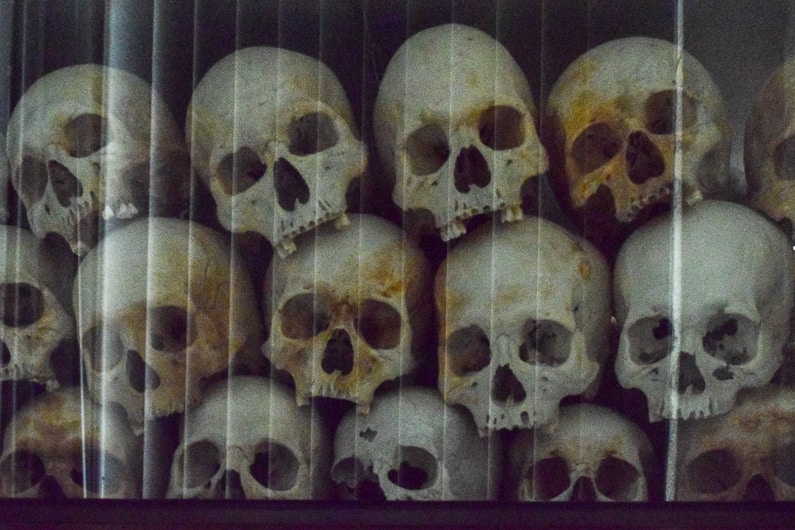
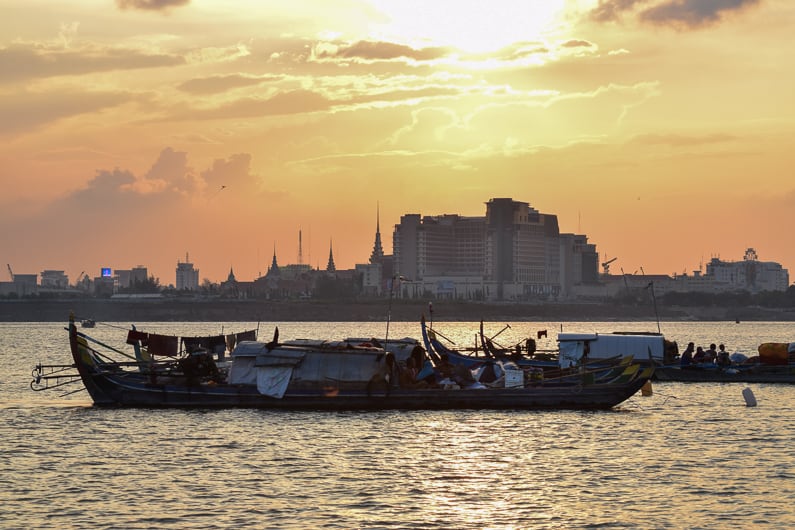

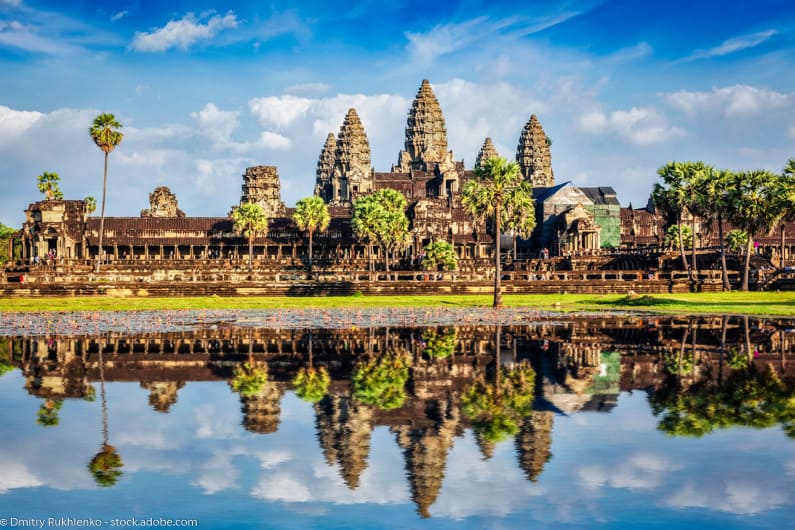



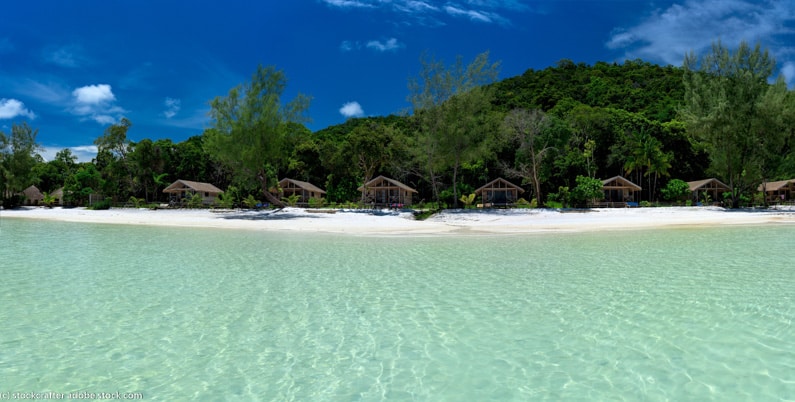
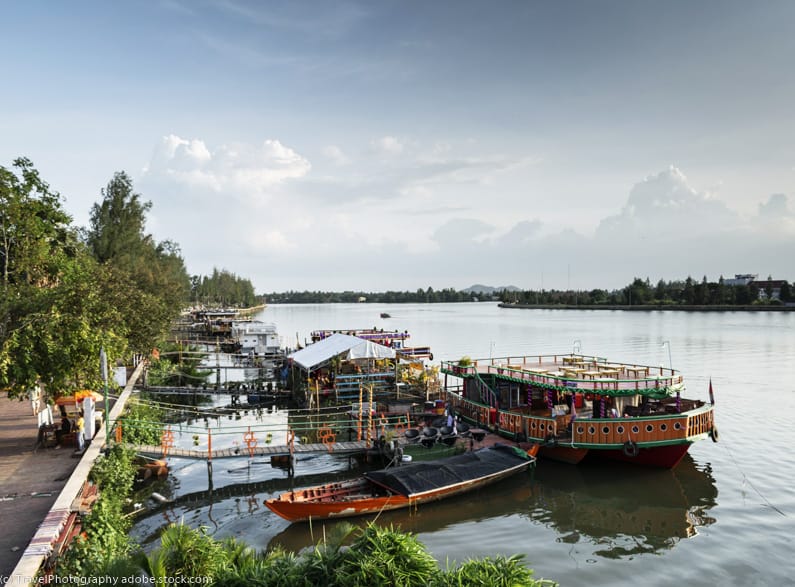




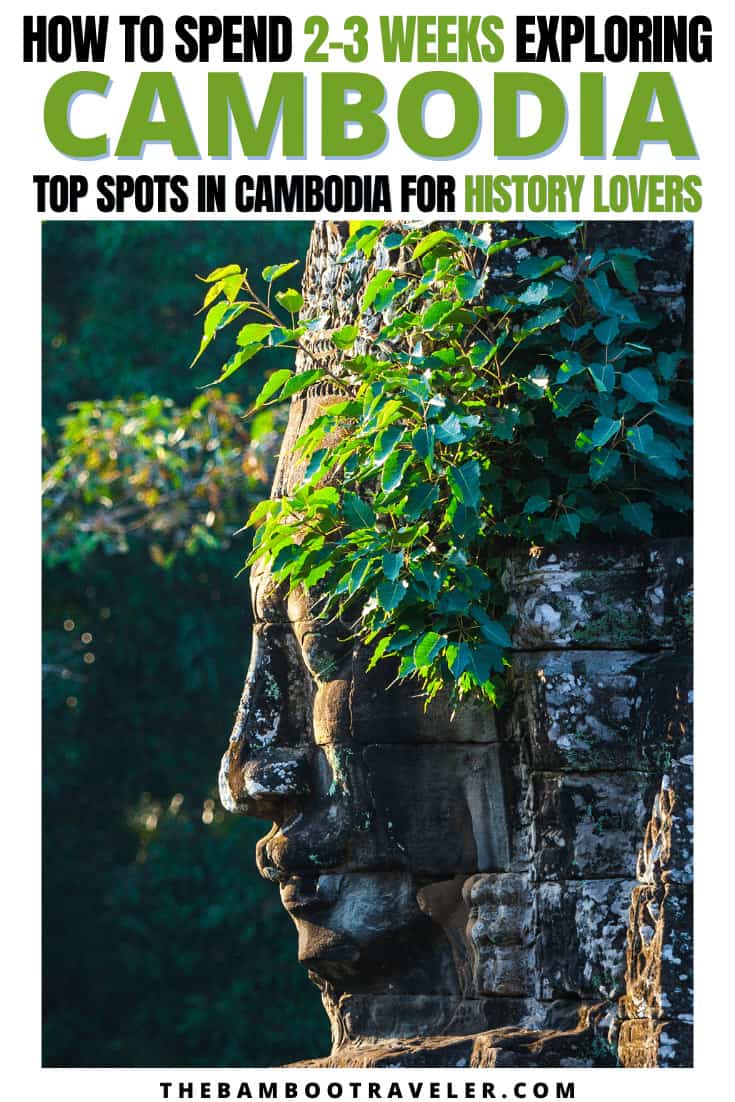




I loved Cambodia too! I also felt safe as a female solo traveler and travelled by bus. What great recommendations and thanks for the memories!
Thank you!
Cambodia is steeped in history and this is a great itinerary. I’m saving this in case I ever get the opportunity to go!
Thank you! I hope you do!
I love the amount of information you’ve packed into this post! I loved visiting Cambodia but there’s so many places I didn’t have time to see! I’ll be sure to keep this post in mind. I look forward to seeing what adventures you get up to next!
Thank you! I hope you get a chance to return to Cambodia and see more of the country.
Recently, Me and my father enjoyed the . Now My father told this Cambodia name and My father have decided next time we all family go there and enjoy the best time there.